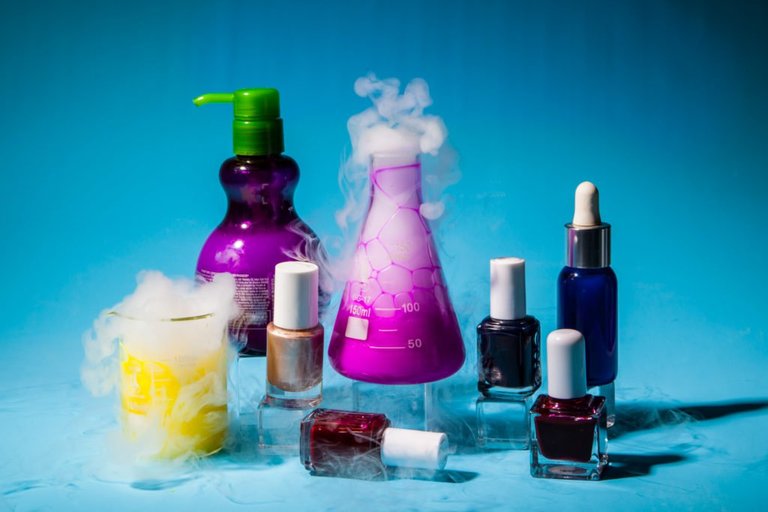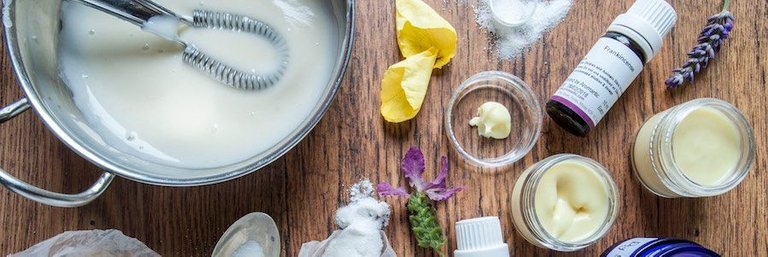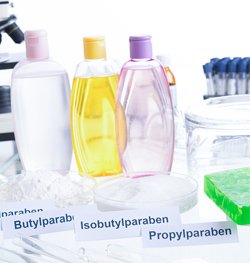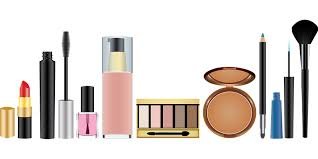Shower gel, shampoo, hair conditioner, hand soap, regenerating creams, makeup, shaving lotion, body moisturizing milk, deodorant, toothpaste and hair foam ... Of course, the list of products dedicated to hygiene and personal beauty is practically endless, as is the set of substances that compose them and that we use, sometimes indiscriminately, on our body.
Cosmetics are products that are used for the beauty or hygiene of the body. It is usual to use as a synonym the notion of makeup, which is the artificial compound that is applied to the face to adapt it to lighting, hide imperfections or achieve a certain characterization.
Currently, most women use cosmetics and even the number of men who use them is increasing. Among the different types of cosmetics, we can mention the bases (which offers a softer appearance to the skin), shadows and eyeliners (to develop a deeper look) and lipstick (which allows the lips to thicken).

Source
It is important to establish, in addition, that in recent years, another important trend that has taken place is the growth in the number of products of this type that opt for elaborating from elements of natural origin. And it is considered that precisely these provide a lot of benefits without harming our health and also without damaging the environment.
There are thousands of substances that can be part of a cosmetic, although the number of ingredients of each product usually does not exceed 20. All of them must appear on the label or packaging, in descending order of mass or volume, so that the consumer can identify potential allergens and compare products with similar benefits. These components can be grouped into three broad categories:
• Active principles: substances to which the main function of cosmetics is attributed.
• Excipients: substances that serve as support or solvent for others. In many occasions, ultrapure water is used as the basis of the cosmetic, free of toxins and other contaminants.
• Additives and correctors: substances that are added to improve the properties of the product, facilitate its use, protect it against biological or chemical agents, defend it from the passage of time or make it more attractive to the eye, touch or smell.
EMULSIFIERS
They are ingredients that, although they do not have a direct action on the body, allow to integrate the aqueous and lipid components, so they are essential to obtain a homogeneous and pleasant texture. Chemically, they act by modifying the properties of the separation surface between the aqueous phase and the lipid phase, decreasing the surface tension and facilitating the formation of micelles that are dispersed in the mixture.
Acid, cetyl alcohol, alkyl glucosides and glycerol monostearate are common.

Source
PRESERVATIVES
They are substances that prevent the deterioration of the product and the development of microorganisms, extending the life of the cosmetic and protecting the consumer from the possible adverse effects associated with its degradation. Among them, we distinguish:
• Antioxidants: are reducing substances, such as thiols or polyphenols, which slow down or inhibit oxidation reactions, by oxidizing themselves, preventing the formation of free radicals. These compounds prevent the rancidity of those especially fatty cosmetics, although it should be remembered that their antioxidant action is not effective on the skin. Among the most common are alpha-tocopherol, butyl hydroxyanisole, butylhydroxytoluene, gallic acid, sodium sulfites, ascorbic acid and esters derived from an ascorbic acid, such as ascorbyl palmitate.
• Antimicrobials and antifungals are those components that prevent the proliferation of bacteria and fungi in cosmetic products. The most widely used are parabens, such as methylparaben, ethylparaben, propylparaben or butylparaben). They derive from para-hydroxybenzoic acid and show excellent records of safety, stability, and tolerance. Alcohols, polyalcohols, glyceride esters and formaldehyde releasers are also used.

Source
THICKENERS
These substances allow giving consistency to the cosmetic product. They may be:
• Lipid thickeners: they are solid at room temperature and must be melted before being added to the emulsions (for example, cetyl alcohol, stearic acid or carnauba wax).
• Natural thickeners: natural polymers that swell by water absorption and increase the viscosity of the product (such as hydroxyethylcellulose, guar gum or gelatin).
• Mineral thickeners: inorganic substances of natural origin with an absorbent capacity (such as magnesium and aluminum silicate, silica and bentonite).
• Synthetic thickeners are organic substances of artificial origin (the most common is the carbomer).

Source
EMOLLIENTS OR SOFTENERS
They are substances capable of replenishing or restoring the lipid layer of the dermis or hair. They act like an oily film on the skin, which is slowly absorbed. The most used are beeswax, glycerin, vegetable oils (coconut, almond, olive ...), petroleum derivatives such as petrolatum or liquid paraffin, linear and cyclic esters and silicones.
COLORING OR PIGMENTS
Many cosmetics contain substances that allow accentuate or modify the natural color of the body surface, which are classified into two groups:
• Organic pigments: can be of vegetable origins, such as beetroot powder, or animal origin, such as cochineal extract (carmine lipstick).
• Inorganic pigments: they are usually metal oxides, such as iron oxide, mica flakes, manganese, chromium oxide and coal tar.

Source
GLIMMER
It is the component that provides a brightness or scintillation effect. The most common are:
• Finely powdered white or muscovite mica flakes, which refract light and create a shine effect.
• Bismuth oxychloride, naturally present in a rare mineral called Bismoclite (also in synthetic pearls), creates a pearly effect of gray silver.

Source
The degree of spraying determines the result obtained: the smaller the particle size (15-60 microns) the less glossy the powder and the more coverage it will give; while if the size of the particles is larger (500 microns) you will get less coverage but a brighter and more transparent effect.
FRAGRANCE
They are the compounds that are added to give a pleasant aroma or to mask the smell of other components. There are more than 3000 compounds used as fragrances, but companies do not have to indicate the presence of these ingredients individually because they are usually considered a manufacturing secret.

Source
MOISTURIZERS AND MOISTURIZERS
• Moisturizers: substances that favor the water supply that the cells need for their metabolism. Moisturizers act in the deep layers of the skin and contain lanolin, vegetable oils, vitamins, salts, and minerals.
• Moisturizers: substances that form a protective barrier that prevents the loss of water from the skin and promotes the capture of water from the environment. These creams are made with glycerin, urea, allantoin, panthenol or propylene glycol.

Source
Currently, there are many industries specializing in cosmetics. However, among them, those that have more weight and relevance internationally, both in terms of sales volume and innovation, are Max Factor or Elizabeth Arden.
.jpg)
Source
The usual thing is that cosmetics are used to achieve a more youthful appearance. People with scars or marks of blows also use them to hide wounds, while actors appeal to cosmetics and makeup to characterize themselves according to the character.
Refences
- http://www.more.com/beauty/makeup/makeup-tools-products/cosmetics-chemistry-beauty-ingredients-and-their-purposes
- http://chemistscorner.com/what-elements-are-used-most-in-cosmetics/
- http://www.chemistryislife.com/the-chemistry-of-foundation-makeup-1
- https://en.wikipedia.org/wiki/Cosmetics
- http://www.organicmakeup.ca/ca/naturalsyntheticcosmetics.asp
I hope you liked it, and that it will be useful, thank you for your time, do not forget to comment and, if you like, vote and follow me for more material like this. @noirac

Being A SteemStem Member